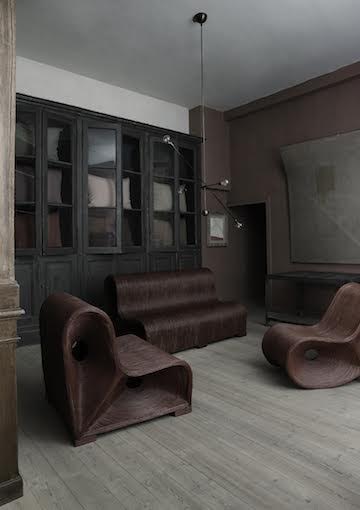Having chosen your beautiful new wood flooring, after much research, you’re told, you need to choose a finish. You choose one that seems innocuous enough, but the next thing you know your floors are glossy or, worse, an unwanted yellow colour.
How to avoid making the wrong choice after all of that investment and care? While it’s best to finish all hardwood floors with some kind of finish, or topcoat, to protect them from scuffs, scratches, and spills, the options for doing so are seldom talked about.
Different finishes work best for different households—it depends on the look you want, expected wear and tear – is the house for a couple or is the space used by a big family who entertain a lot – how much cleaning and maintenance you’re up for, budget and more. The more layers, the more protection. Here’s a cheat sheet, to avoid any post-installation surprises. The finish is what you walk on, and you want it to bond with the wood, not just to float on top.
Can I finish (or refinish) a floor myself?
You can rent a floor sander and apply the finish but most people hire professionals who know how to contain the dust during on-site sanding. Ask anyone who’s done this job once and they say never again.
Are floors always finished on-site?
If you’re having a new floor installed, prefinished wood is now common. All wood flooring used to be sanded and finished in the field, but now 75 per cent of the floors installed are prefinished. Customers see exactly what they’re getting, and can walk on it as soon as it’s laid. Plus, no dust. Pre-finishing also facilitates ultraviolet curing, a new process that makes the surface extra durable. This can also be done on-site and cuts the turnaround time considerably.

Inside Designer Vincenzo De Cotiis’s Residence in Milan by Anniversary Magazine
What are the main options for floor finishes?
Whether a floor is prefinished or finished (or refinished) on-site, there are four basic types of products most commonly used: water-based polyurethane, oil-based polyurethane, oil, and wax.
WHERE DOES THE COLOUR COME FROM?
The stain provides the colour and the finish goes on top of the stain to protect it and the wood. A natural clear stain is the most common, but you can get pretty much any colour you want. Greyish brown has become popular in the last few years because of Restoration Hardware and its weathered woods. Designers often love to put a thick layer of stain on a wood floor to give it uniformity, but most floors that are uniform in color are going to be compromised in longevity.
1. Water-Based Polyurethane Finish: For Low-Maintenance, High-Traffic Households
When polyurethane arrived on the scene in the 1970s, it was hailed as a superior floor finish – easy to apply and super tough. But back then all polyurethanes were oil-based, and high in volatile organic compounds, or VOCs, that can give off noxious chemicals even after drying. Now we have water-based polyurethanes, with low or no VOC content. At first these weren’t quite as tough as oil-based polys, but today’s formulations can be even more durable. This is the floor-finish most often used today.
Pros:
- Low odor and low VOC content.
- Available in different sheen levels: matte, low gloss, and high gloss.
- Fast-drying; you can walk on it the next day (in stocking feet, anyway).
- Clear in colour; it won’t tint wood another shade.
- Very tough and scratch-resistant.
- Regular cleaning is the only maintenance required. Remove dirt and abrasives using a soft terry cloth mop and a recommended cleanser. If you plan to re-coat at some point, don’t use wax or other products that would affect bonding, even a mild detergent or soap can leave a residue.
Cons:
- You can’t just touch up high-traffic or damaged areas; to re-finish, youll have to re-sand and re-coat the floor in its entirety. If your floors get a lot of wear, that might be every few years. But with careful upkeep (and rules like shoes off at the door), a floor might last 20 years before it needs refinishing.
2. Oil-Based Polyurethane Finish: For Traditionalists
These finishes tend to be used by old-school tradesmen who remain convinced that oil-based poly gives the most durable surface. If you’re a traditionalist, consider these pros and cons:
Pros:
- Less expensive than water-based poly.
- Low VOC content.
- Available in different sheen levels: matte, low gloss, high gloss.
- Slightly more viscous than water-based polyurethane, and gives a warmer finish.
- Durable surface, not prone to scratching.
- Regular cleaning is the only maintenance required.
Cons:
- Can impart an amber colour.
- Can give off heavy odours.
- Slower-drying than water-based poly.
- Generally less durable than todays water-based polys; and oil-based polys lost a lot of strength when the EPA required manufacturers cut VOC content.
- As with water-based polys, you can’t spot-refinish; you need to do the entire floor.
3. Oil Finishes: For Fans of Euro-Style
A recent trend is the European-style finish lead by the Belgian architects, achieved by applying a light coat of oil or an oil-wax product. Manufacturers have proprietary formulations whose ingredients vary but the root is a natural oil of some kind, plus additives that can include wax.
Pros:
- Low VOC content.
- Low build-up.
- Gives floor a warm feel.
- Easily applied (some only require one coat).
- Brings out the natural grain, especially if flooring is walnut.
- Scratches are easily fixed by applying the recommended cleaner.
Cons:
- Slow-drying, it can take up to 72 hours to dry if many coats are applied.
- Requires more maintenance. Besides regular cleaning, you need to refresh the surface every few months, using a specific product, and apply a light coat of the oil once a year.
- It’s not the most durable but, as mentioned above, scratches are easily repaired.
4. Wax Finishes: For Hipsters
This type of finish is historically revered, but maintenance issues have led to its fall from favour, whether paste or liquid wax.
Pros:
- Low VOC content.
- Gives floor a warm feel with a matte or low-sheen surface.
- Enhances natural grain and colour.
- Easily repaired by applying more wax.
Cons:
- Floor must be sealed before applying wax.
- Requires multiple coats to build up depth.
- High-maintenance: Needs regular buffing and recoating.
- Can darken wood.
- Not very scratch-resistant (but scratches can easily be repaired).
Which finish is the most cost-effective?
When it comes to price, costs can vary widely since so many factors are involved. But he says that a water-based polyurethane finish can range from $10 per square metre to $25 or $30, and an oil-based poly would be slightly less. An oil finish costs more say, about $5 more per square metre, and a wax finish is the most expensive.
Which finish should I choose?
For a natural option, oil finishes are a favourite option. Polyurethane is essentially a chemical combination, like a plastic; it’s born in a laboratory, he says. There are a lot of good things about it, but if you want to bring out your wood floor’s natural look and feel, an oil or natural wax is best. When light hits an oil finish, the wood drinks it in. But even as oil finishes gain popularity, many Americans resist the extra care required. Whats next? Manufacturers are now making water-based polyurethanes that resemble an oil finish, but with the low maintenance and durability of a poly. Stay tuned for a best-of-both-worlds option. Original story published in Remodelista.









